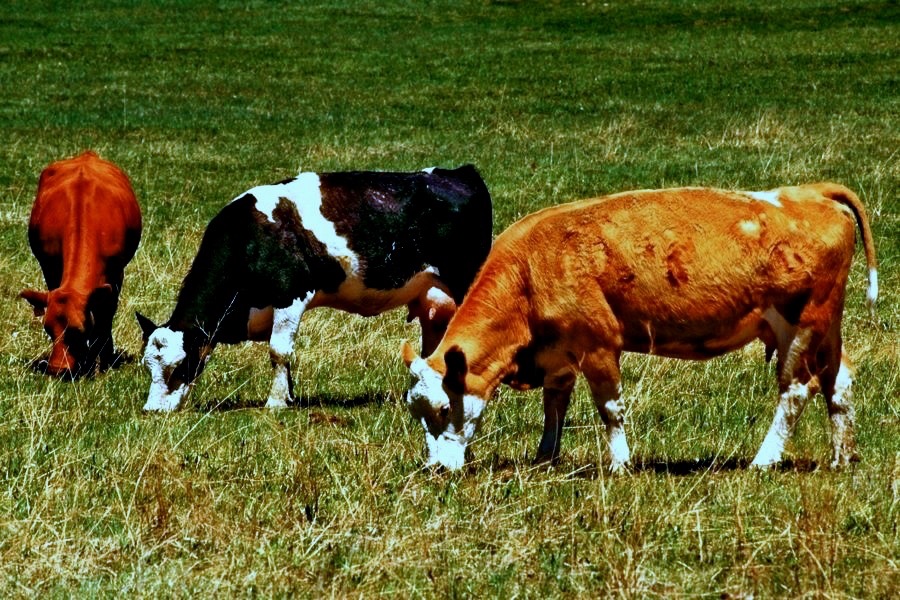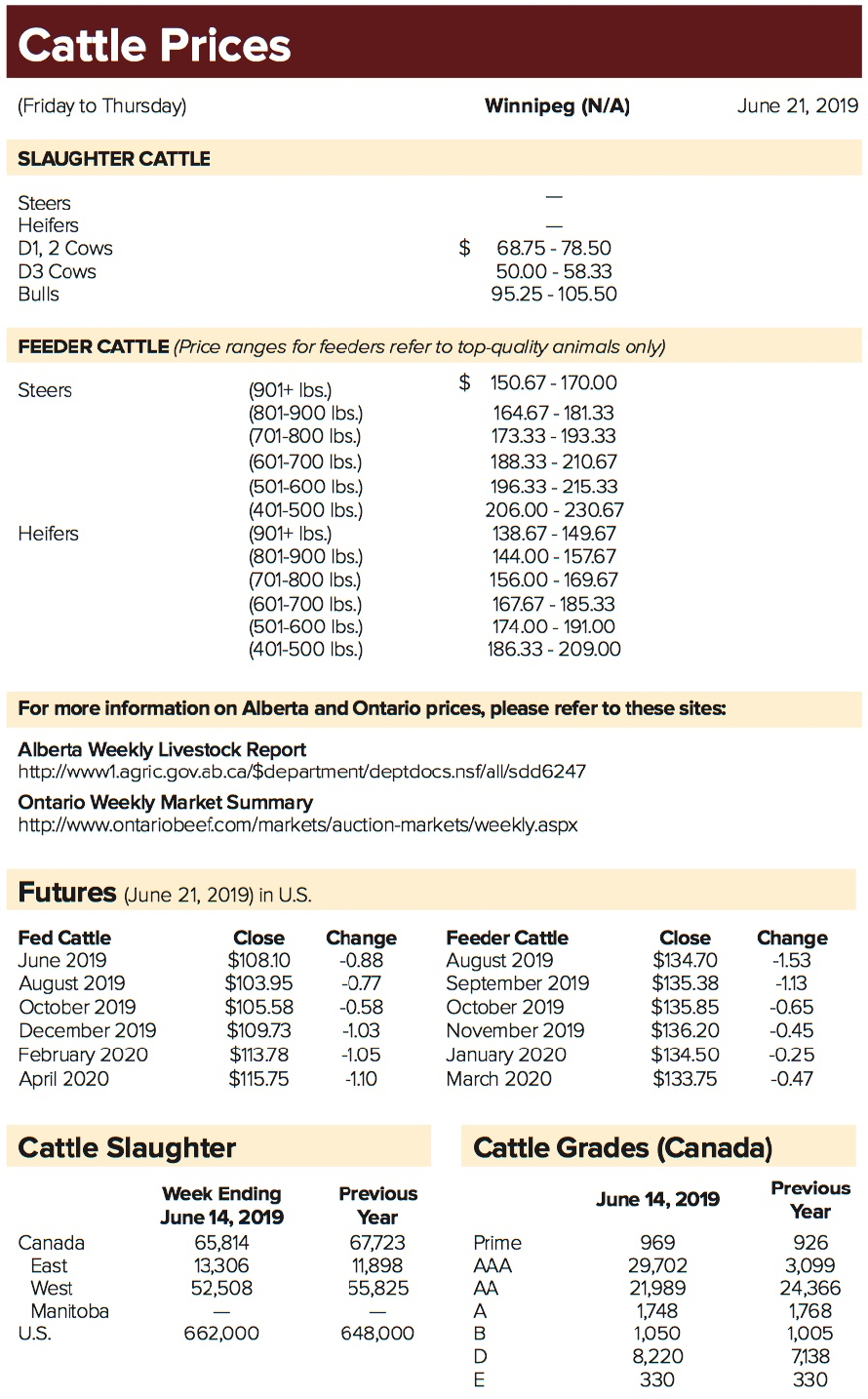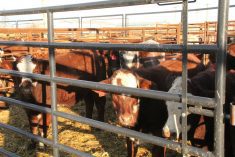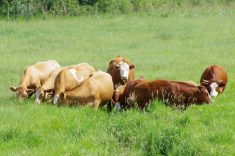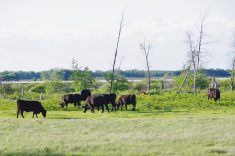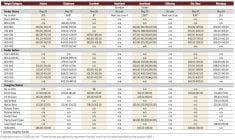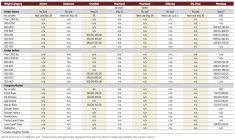Rain showers across much of the province during the week ended June 21 helped take some of the edge off the cattle markets, as concerns over dry pastures dissipated slightly.
With the rain in southern Manitoba, “our numbers were probably down by 30 to 40 per cent from the previous week,” said Robin Hill of Heartland Livestock Services at Virden.
While more moisture is needed, the precipitation should allow more cattle to stay out on pasture.
Read Also

Canadian canola prices hinge on rain forecast
Canola markets took a good hit during the week ending July 11, 2025, on the thought that the Canadian crop will yield well despite dry weather.
However, pastures were still damaged over the past month and more rain is needed. This year’s hay crop is also questionable, due to the lack of moisture and earlier frost.
“The hay condition is not very good,” Hill said, adding it might be too late to save the crop, but “we’ll see.”
As a result, Hill said, ranchers don’t want to be holding on to any open cows that haven’t calved yet. Those animals are moving to market, rather than going out to valuable grass. The demand is there in the butcher market, keeping prices reasonably steady.
Hill said the generally larger-than-normal number of cows and bulls moving through the rings this year has caused prices to slip a bit, but he added that those animals have also sold for a lot less in the past.
On the feeder side, grass cattle producers bought earlier in the year, but with pastures all filled up any feeders still moving are going straight to western feedlots.
“I think we’ll see smaller volumes of feeder cattle for the next little bit,” said Hill.
“If we got into some big runs, we could see some cattle going south and east,” he added, but the volumes aren’t large enough for that right now.
Heartland Virden will run for most of the summer, only closing the weeks of July 17 and 31. Activity typically slows down over the summer months across the province. While a few yards continue to hold sales through the summer, a number of auctions will be closed for the next month or so, before reopening in August when the fall run kicks off.
Cattle futures in the U.S. remained under pressure during the week, due largely to continued strength in corn prices as that market dealt with unseeded acres and excessive moisture across the Midwest.
The U.S. Department of Agriculture released its June Cattle on Feed report on Friday, June 21. Total inventory in the country on June 1 was up 1.6 per cent on the year at 11.7 million head, which beat market expectations for a more modest increase.






